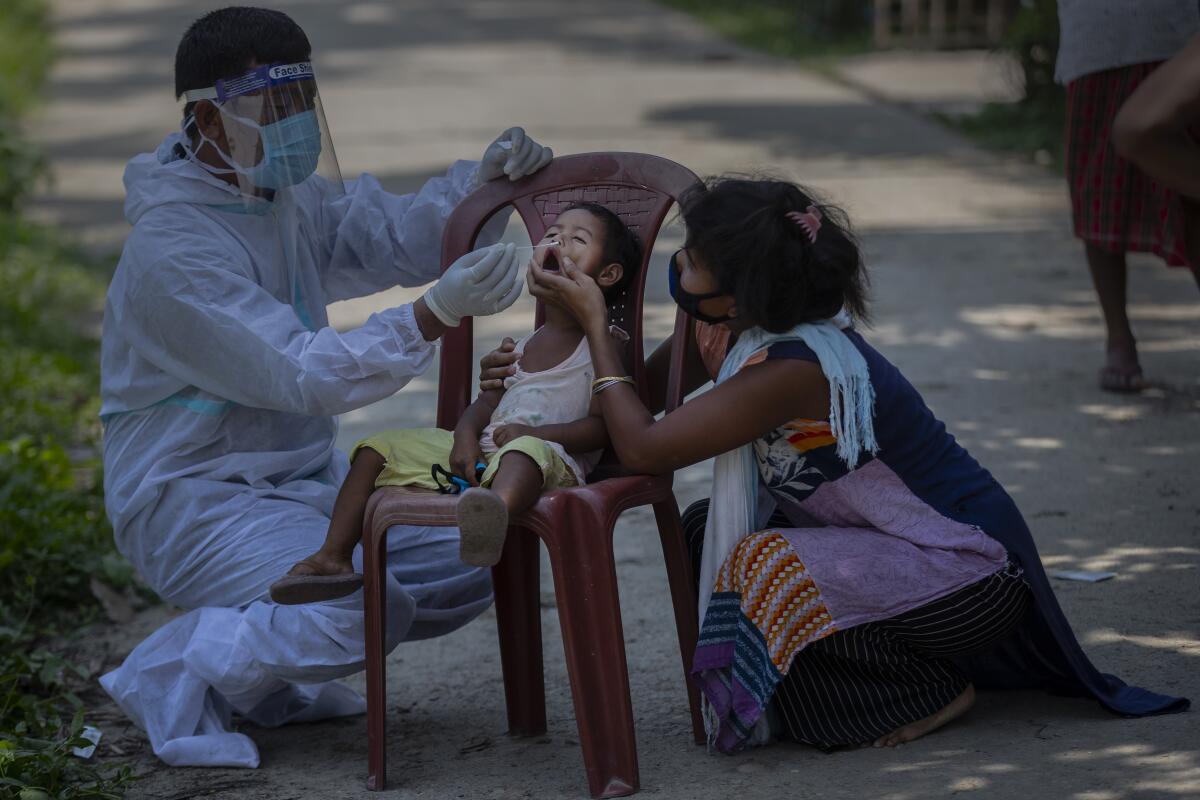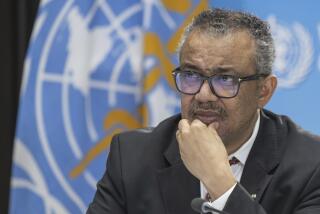India’s COVID-19 death toll passes 300,000, world’s third-highest

- Share via
NEW DELHI — India’s cumulative death toll from COVID-19 exceeded 300,000 on Monday as a devastating surge of coronavirus infections appeared to be easing in big cities while swamping the poorer countryside.
The death toll recorded by India’s health ministry comes as slowed vaccine deliveries have marred the country’s fight against the pandemic, forcing many to miss their shots, and as a rare but fatal fungal infection affecting COVID-19 patients has worried doctors.
For the record:
6:06 a.m. May 24, 2021An earlier version of this article said the number of worldwide COVID-19 deaths was 34.7 million. The figure is 3.47 million.
India’s death toll is the third-highest reported in the world, accounting for 8.6% of the nearly 3.47 million COVID-19 fatalities globally, though the true numbers are thought to be significantly greater.
India’s health ministry Monday reported 4,454 new deaths in the last 24 hours, bringing India’s total fatalities to 303,720. It also reported 222,315 new infections, which raised the overall total to nearly 27 million. Both are almost certainly vast undercounts.
From remote Himalayan villages in the north through the vast humid central plains to the sandy beaches in the south, the pandemic has swamped India’s underfunded healthcare system after spreading fast across the country.
In the capital, New Delhi, residents have died at home with no oxygen as hospitals exhausted limited supplies. In Mumbai, COVID-19 patients have died in crowded hospital corridors. In rural villages, fever and breathlessness claimed victims before they were even tested for coronavirus.
Some scientists say India’s COVID-19 surge this spring has less to do with a variant and more to do with the government’s lifting of pandemic rules.
While the megacities have seen signs of improvement in recent days, the worrisome surge isn’t over. It appears to have already taken a ghastly toll in the country’s vast rural areas, where a majority of the people live and where healthcare is limited.
In recent weeks, hundreds of bodies have washed up on the banks of the Ganges River in Uttar Pradesh state. Many others have been found buried in shallow graves along its sandy banks. It has prompted concerns that they’re the remains of COVID-19 victims.
India’s vaccination drive has also slowed recently, and many states say they don’t have enough vaccines to administer.
The world’s largest vaccine-producing nation has fully vaccinated just over 41.6 million people, or only 3.8% of its nearly 1.4 billion population.
Many Indian Americans in California are straddling two worlds: an improving COVID outlook in the U.S. and a heartbreaking crisis in India.
The first known COVID-19 death in India happened March 12, 2020, in southern Karnataka state. It took seven months to reach the first 100,000 dead. The toll hit 200,000 deaths in late April. The next 100,000 deaths were recorded in just 27 days after new infections tore through dense cities and rural areas alike and overwhelmed the healthcare system.
Average daily deaths and cases have slightly decreased in the past few weeks. The government Sunday said it was conducting its highest number of COVID-19 tests, with more than 2.1 million samples tested in the previous 24 hours.
More to Read
Sign up for Essential California
The most important California stories and recommendations in your inbox every morning.
You may occasionally receive promotional content from the Los Angeles Times.















